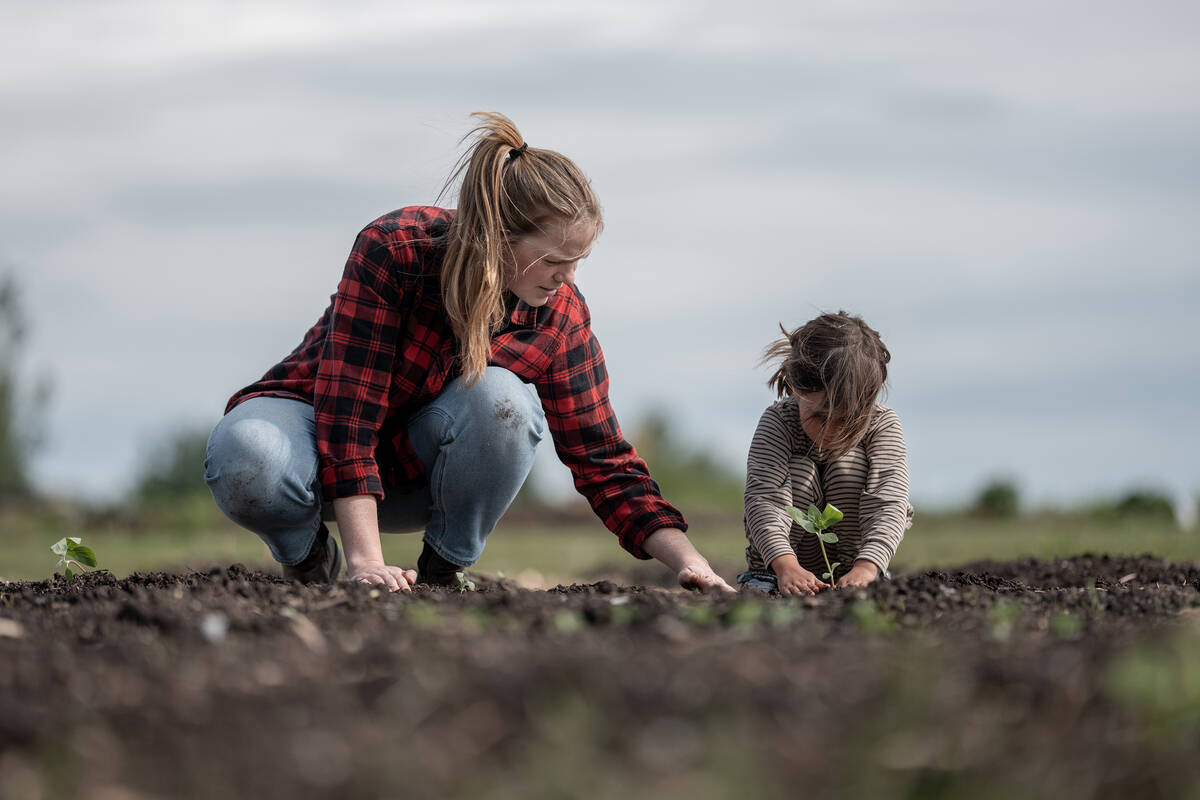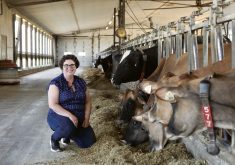A proposed $36 million food hub in eastern Ontario may be the model for a more regionalized Canadian food system that will benefit farmers and consumers as they emerge from the disruption of COVID-19.

“We know that food sovereignty is on the mind of everyone,” says Carole Lavigne, director of economic development and tourism in the United Counties of Prescott-Russell. “People are more inclined to go back to basics and know where their food comes from.”
Food hubs are centres where local farmers can get their products aggregated, distributed, marketed and sold. They have different characteristics — some provide processing capacity, business management workshops and food safety training, for example. They can be bricks and mortar buildings or digital meeting places. The point is to connect farmers with consumers, retailers and institutional buyers who can buy their products.
The Prescott-Russell story
In her past, Lavigne lived on a dairy farm that was basically self-sufficient in food — preserving the bounty from their gardens and orchards, processing milk into butter and cheese, and raising cattle, chickens and pigs for meat, and even using the hides for clothing.
Read Also

Farm succession: Where to begin?
Recognizing that the process of farm succession is lengthy, involved and requires a solid end goal can help farmers determine where to start.
She felt that if she could bring other small- and medium-sized operations together, they could feed a whole region, province or country.
Lavigne has been working on restructuring the agri-food sector in eastern Ontario since she joined the Prescott-Russell office in 2007. Between that time and 2014, she launched many activities to increase consumer awareness of local food and bring local farmers’ products to market.
An especially successful foray is the “Local Food Counter,” which started in 2014 with a Metro grocery store in Casselman. Basically, a self-service part of the store is dedicated exclusively to selling products that are proudly branded as local.
“Farmers experienced a 32 per cent increase in sales in the first year,” she says, and the Metro realized a $1 million increase in net new overall sales.
Subsequent farmer surveys, however, showed that the middle of the supply chain was a real issue — especially the lack of local abattoirs, processing facilities and access to marketing.
That’s how the idea of the food hub came about. The proposal, which obtained council approval in April 2020, is for a 100,000-square-foot facility that will be located close to Highway 417 for easy access to transportation.
The facility will have slaughtering and cold storage for red and white meat. There will be separate sections for processing raw meat and fruits and vegetables, and another section for producing ready-to-eat products. Everything will be traceable and branded local, and the facility will be federally inspected, so products can be sold into national chain stores.
A dearth of mid-scale processing
Alison Blay-Palmer says that the gap in local processing capacity is a problem right across the country.

“It’s a key missing piece,” says the UNESCO chair on food, biodiversity and sustainability studies who leads the Laurier Centre for Sustainable Food Systems at Wilfrid Laurier University in Waterloo.
Blay-Palmer and a team of researchers recently completed a comprehensive study of how the Greater Golden Horseshoe’s (GGH) food system works. The GGH extends from Niagara Falls around the western end of Lake Ontario through Toronto to Oshawa.
As part of the study, redundant trade was identified as an issue. A food flow analysis conducted in 2016 showed that, for example, 25 per cent of carrots were exported from the area while 20 per cent of the carrots consumed were imported. Furthermore, production could not keep up with local demand, with a deficit of 2.9 million pounds of carrots.
“A big part of the reason for this is that most of the products go through a centralized point — the Ontario Food Terminal in Toronto,” Blay-Palmer says. “There are no regional distribution centres for farmers to sell their product locally, and the pandemic has really shown us clearly why that’s important.”
It’s part of a wider explosion of innovation. Besides the physical food hubs like the one in Prescott-Russell, there are also online markets like Open Food Network Canada, which is actually an international organization dedicated to connecting local farmers and consumers.
“All these initiatives are happening because we don’t have the middle-scale infrastructure to support farmers,” Blay-Palmer says.
In fact, the GGH study’s top recommendation was to develop that infrastructure and improve regional food flows. It specifically pointed to food hubs as a possible solution.
“We have people producing food, and we could have people producing that food for local markets,” she says. “The food hub also provides an opportunity for local institutions, like schools, to get their food from local farmers, without having to drive all over the place.”
There are multiple benefits to having a food hub, and Lavigne is passionate as she lists off the “whys” for going ahead with her project: Helping small and medium producers increase revenue, providing more local food to the region, and helping sustain the regional economy and food security in case of a disruption (like COVID-19) in global food supply chains.
What about the export-oriented industry?
Blay-Palmer says that Canada’s dependence on world markets will never go away — commodities like wheat and soybeans will always need those markets and Canada will always need to import items like bananas and coffee.
“The idea is not to have no exports, but we are aiming for increased production for local markets and improved income stability for farmers,” she says. “It’s ridiculous that some farmers live hand to mouth.”
“Things are out of balance right now — the food system is leaning far too much on the export side.”
She uses the COVID-19 pandemic as one example of how the current food system showed its weaknesses, and cites the 9/11 crisis, when the U.S. closed its borders and Toronto was within three days of running out of food.
As to whether people would actually be willing or able to pay more for local food, Blay-Palmer suggested governments could mandate procurement policies for public institutions in which fair wages for farmers and their workers could be built in.
“If we’re providing healthy local food to people, the money stays in the community, creating a circular economy. It also helps keep Canadians healthy, which keeps them out of hospitals — reducing costs to the public.”
Keeping money circulating in the local economy is a big factor in Lavigne’s food hub proposal.
With more than 7,000 farms in eastern Ontario, and additional farms in western Quebec that could take advantage of the hub’s services, she is confident it will be a success. She’s also sure of the people backing the project.
“We have a tremendously talented team here, and we have lots of support from council,” she says.
Lavigne has already lined up $2.5 million from the local government. The project will need $12 million from other levels of government and $21.5 million from private sector investors.
While a site had yet to be chosen at time of printing, she expects to see shovels in the ground next spring and opening the food hub in the fall of 2022. A total of $11.4 million in sales is projected for the first year, and 65 people will need to be employed initially, rising to 100 when the hub is fully operational.















